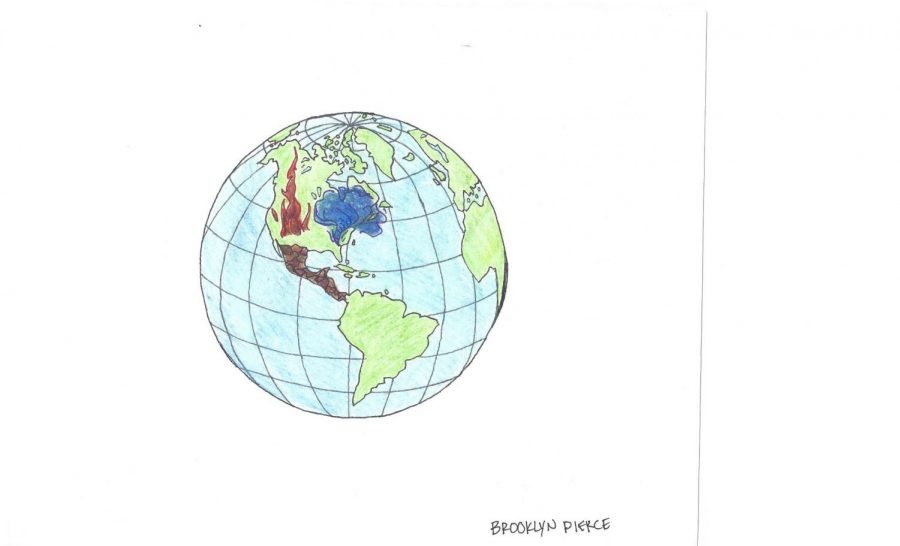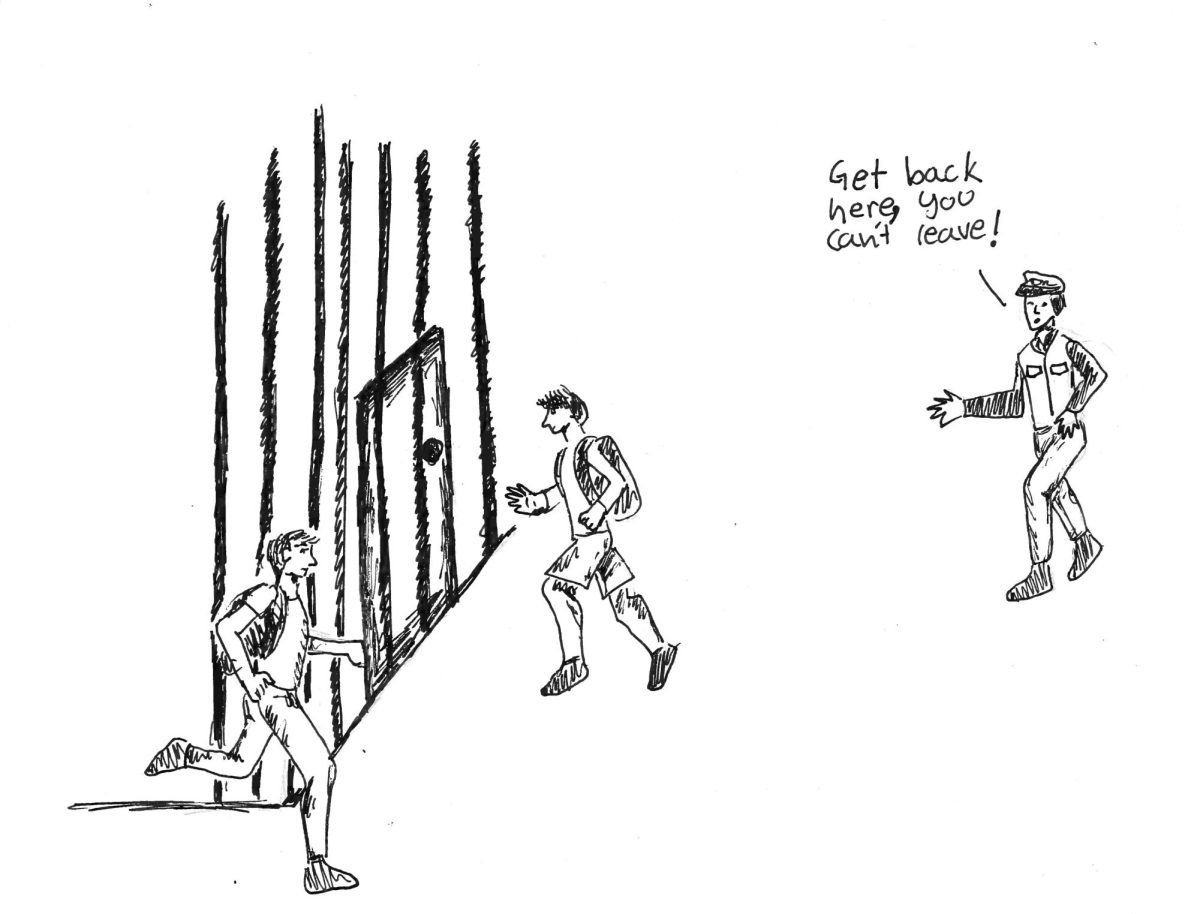Climate Change: A Not So Silent Disaster
September 22, 2017
Over the past two months, never has the weather in Portland been as… interesting. For the first time in my life, my dad, who treasures the outdoors in the same way you or I would treasure a few extra hours of sleep every night, told me to stay inside. This was in early August, when it was 102 degrees and the smoke caused by more than 100 wildfires in British Columbia decided to pay us a visit. Then Eagle Creek happened. Breathing became painful, the sky was permanently gray, the moon was red, and I couldn’t even see across the Willamette. Granted, I’m more than relieved that I can breathe comfortably again, but this mess cruelly reminded me that climate change is no longer something that will hurt us in 20, 50, or however many years scientists predicted it would. Climate change is real and it’s real right now. There is evidence not only here, but all around the world.
For everyone living in Portland, the Eagle Creek fire was the most obvious sign. You could simply look out a window and see that something was seriously wrong. When PPS released us early on Sept. 5, the Air Quality Index (AQI) had been 169 since five in the morning, which is 19 points above the maximum healthy level. Between 3:40 and 4:40 in the afternoon, it was in the two hundreds, hazardous enough to cause serious health effects. This is the first time a fire of this size has happened so close to Portland, but with temperatures rising steadily all over the world, it isn’t so surprising. Since 1970, temperatures in forested parts of the western U.S. have increased by 2.5 degrees Fahrenheit. Over the last 30 years, human-created climate change has caused the number of acres burned in western U.S. wildfires to nearly double. As I write, the Eagle Creek fire covers 35,600 acres, equivalent to 56 square miles, and is 11 percent contained. If the fire continues spreading at the same rate and the firefighters contain it at the same rate, then how many square miles will it eventually cover? That’s one math problem I’m hesitant to solve.
Hurricane season in the Atlantic Ocean ends right before December, but it has already yielded disastrous results. On Aug. 26, Hurricane Harvey, with winds up to 130 mph, became the first Category Four hurricane to make landfall in the U.S. since 2004. It dropped 51.9 inches of rain, the wettest tropical hurricane ever recorded in the lower 48 states. In addition to displacing 30,000 people, the damages could cost up to $190 billion, making it the most expensive natural disaster in the U.S. (Hurricane Katrina in 2005 is second with a cost of $125 billion). Not long after, Hurricane Irma made its case to be perhaps the strongest storm to ever hit the U.S. Its tropical storm force winds covered an area larger than Florida, and 1.3 million Floridians were left without power after it made landfall. One of the scarier things to consider is that Irma spent a little more than three days as a Category Five, something that only two other hurricanes have achieved on record. The nation of Barbuda was the biggest victim of Irma’s prolonged intensity, as 95 percent of its structures were destroyed when Irma (at the time 378 miles wide, six times the total size of the island) swept across it. Before Harvey and Irma, the continental U.S. had never been hit by two Category Four plus storms in the same year.
While Irma was slowly dissipating, southern Mexico was hit by a massive earthquake off the Pacific coast. Registering 8.2 on the Richter scale, it was the strongest Mexican earthquake in 80 years, causing damage to thousands of homes in the Mexican states of Oaxaca, Chiapas, Veracruz, and Tabasco. Nearly 100 people have died, and damage to hospitals and loss of power and water have made recovery so difficult that schools have been converted into makeshift clinics. Although 74 percent of the 1.85 million homes that lost power have had it restored, 20 aftershocks have measured higher than 4.0 on the Richter scale, causing coastal residents to evacuate their homes due to waves washing up the Pacific coastline.
On the other side of the world, floods in South Asia inflicted considerable damage on Bangladesh, India, and Nepal over the summer. About 41 million people were directly affected by flooding and landslides caused by monsoon rains. Bangladesh lost more than 700,000 homes, and the country faces long-term problems with food because so much farmland was destroyed. Nearly 460,000 Nepalese were forced to leave their homes and dozens are missing. In India, at least 700 people died, and Mumbai, the country’s largest city, was brought to a standstill for several days due to waist-high water. The flooding has left 1.8 million children out of school, and they could potentially fall out of the school system for good if education is not made a serious priority during relief.
In terms of weather, 2017 has been quite an exceptional year. You could make the argument that fires, hurricanes, earthquakes, and floods occur across the globe every year, but I see this year as an ominous sign. There were a lot of “firsts” and “strongests” describing the natural disasters that happened. Many of them were not ordinary. Considering that climate change will get exponentially worse going forward, how will we handle something like this annually from here on out? If this year was difficult, what will it be like in 10? How thin will we be stretched? Even if you don’t really want to think about that, you should at least know this: climate change is not very distant anymore. What we do now directly affects what will happen to us in the future. Ignorance may be bliss, but that will not stop the inevitable.














